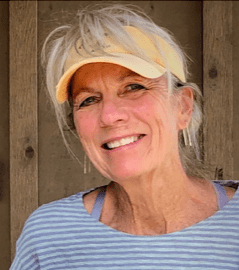My friend Mary just called. She lives now in Portland, where temperatures shot north of 100 degrees.
“We are trapped under The Dome,'” she said, speaking from her backyard. I understood her to mean the summer heat cooking the western United States, including Utah. And, she declared in an exasperated tone, “The crows are panting!”
I imagine Mary standing hose in hand, coming to their rescue, refreshing the birdbaths in her urban garden with clean, cool water. I did the same that morning. It hadn’t rained in northern Utah in many days with nothing in the forecast but an infrequent afternoon squall. I still search my yard in Midway for hungry or thirsty birds.
Nature is what we see,
the Hill, the Afternoon, Squirrel, Eclipse.
the Bumblebee.
Emily Dickinson’s poem, most likely composed around 1866, is prescient. In the context of today’s environment her sweet words ring an urgent bell.
On a rare westward float down the Yampa River that courses through Dinosaur National Monument, our kayak veered towards a sandy beach for a pit stop.
We stretched our legs and walked the shoreline with the full-throated song of a wild river. In fact, we were very near the exact location, at Echo Park on the Green River, where the waterway would have been dammed, flooding the Green and Yampa River valleys.
Had it not been for the successful efforts in the 1950s by author Bernard Devoto, Sierra Club director David Brower and a coalition of rabid conservationists, the wild Yampa River would be like all the rest of the West’s natural rivers, impeded by evaporating reservoirs drowning unseen Indigenous treasures and geological wonders.
Yes, nature is what we see.
On this day we were wilderness beneficiaries. Evidence of the monument’s wild inhabitants were marked, as if by accident, in the Yampa’s wet river sand. My footprints intermingled with the hoof prints of a thirsty bighorn sheep and the soft impression, wide and finger-like, left by a wading blue heron or possibly a sandhill crane.
Some tiny scattered shells from a prehistoric era reminded us of our impermanence. But the message left by those wild creatures seemed to say, “We were here, we are here, don’t erase us.”
At the time, I was sorry not to have a chance encounter with those wildlife messengers. Fleeting moments of “wild seeing” are remarkable in any setting, urban, wild or in between. Whether we witness the hatch and fledge of two mini Rufus hummers from our front porch swing or surprise a young brown bear still cloaked in blondish fur on an alpine hike, we are amazed and awestruck.
Happily, I was rewarded further down river with sightings of bald eagles, nesting ospreys and finally, camouflaged big horn sheep blending naturally with their cream-colored rock surroundings.
Wild creatures are nothing short of vibrant miracles in a stressed and often overlooked natural world. Shrinking wilderness, misappropriated open spaces, overdevelopment, drought, poaching, light pollution, degraded habitat, dirty air and waterways are ever present obstacles to our wild neighbors.
They deserve better from us. Much better.
In Dinosaur National Monument, American’s federal tax dollars insure a protected, pristine habitat for wildlife. The monument’s visitor restrictions and commitment to preserving the archeology, environment and cultural and natural history guaranteed my memorable wilderness experience. I pocket this inspiring model for our local open space and large landscape conservation.
Prioritizing the wild’s well being offers countless rewards: dazzling wonder, raw beauty, unimaginable discoveries, soulful awakenings, healthy ecology, biodiversity and panting crows saved by watchful friends.
To pay attention, this is our endless and proper work. — Mary Oliver
Leslie Miller is the co-editor of “Reimagining A Place for the Wild” and a former, long-time resident of Park City who now lives in Midway.

